The Elf Owl (Micrathene whitneyi), a diminutive marvel in the avian kingdom, captivates with its petite size and enchanting presence.
Claiming the title of North America’s smallest owl, the Elf Owl stands at a mere 5 to 6 inches in height, concealing a world of fascination within its tiny frame.
Native to the arid landscapes of the southwestern United States and parts of Mexico, this resilient species thrives in habitats adorned with saguaro cacti, mesquite trees, and desert vegetation.
As a nocturnal maestro, the Elf Owl gracefully maneuvers through the darkness, utilizing its exceptional hearing and keen eyesight to hunt for insects under the cloak of night.
With distinctive vocalizations and unique nesting habits, the Elf Owl weaves a tale of adaptability, emphasizing its importance in the delicate ecosystems it calls home.
As we explore the intricate world of the Elf Owl, we uncover a species that defies its size, leaving an indelible mark on the captivating tapestry of North American wildlife. Stay focused.
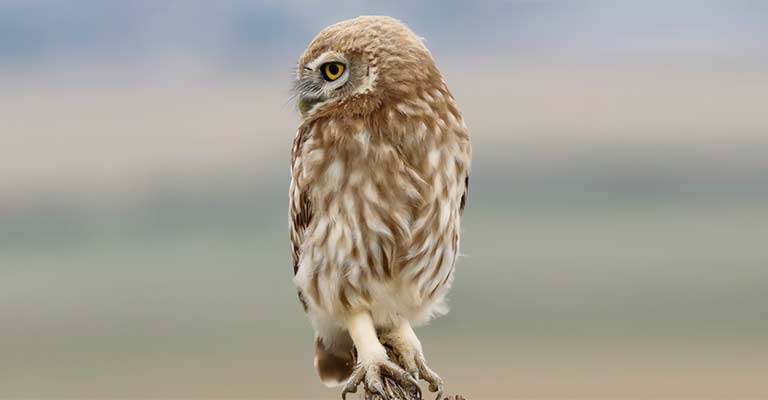
Identifying Characteristics of Elf Owl
The Elf Owl (Micrathene whitneyi) is a diminutive and fascinating species of owl, earning its name from its small size and elusive nature.
With a wingspan of about 9 inches and a height of 5 to 6 inches, the Elf Owl is the smallest in North America, making it a captivating subject for bird enthusiasts.
Identifying this unique bird involves recognizing several key characteristics that set it apart from other owl species.
Size and Appearance
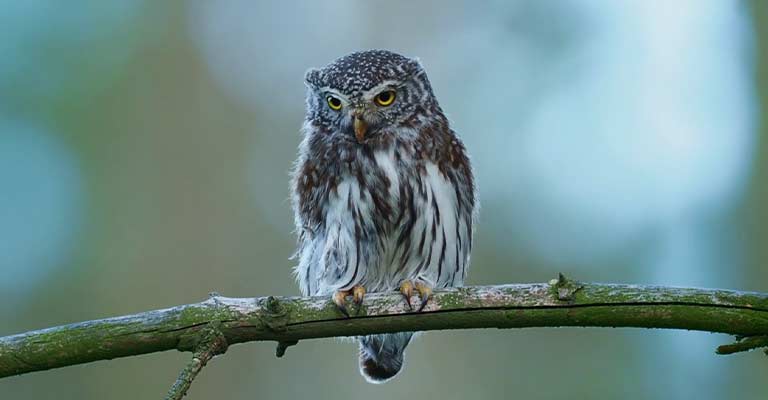
The most distinctive feature of the Elf Owl is its petite size. With a compact build and a round head, it exhibits a charming and almost toy-like appearance.
Its plumage is primarily gray-brown, providing effective camouflage in its arid desert habitats. The facial disc is pale and framed by a thin, contrasting border.
Wings and Tail
Examining the wings and tail of the Elf Owl is crucial for identification. The wings are relatively long and pointed, facilitating agile flight, while the tail is short and squared-off.
These adaptations are essential for the bird’s maneuverability, especially during its nocturnal hunts.
Facial Features
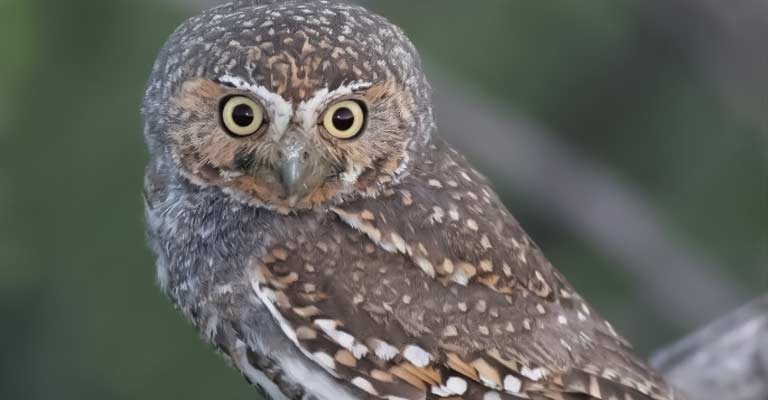
The facial features of the Elf Owl contribute significantly to its identification. Its large, expressive yellow eyes are forward-facing, aiding in binocular vision for precise hunting at night.
The facial disc, though smaller compared to larger owl species, helps in capturing and funneling sound to enhance the owl’s exceptional hearing.
Vocalizations
Elf Owls are known for their distinct vocalizations. Their call is a series of sharp, high-pitched whistles resembling the sound “poo-poo-poo,” often repeated in a rhythmic pattern.
These calls are a reliable auditory cue for birders attempting to locate these elusive creatures in the wild.
Habitat Preference
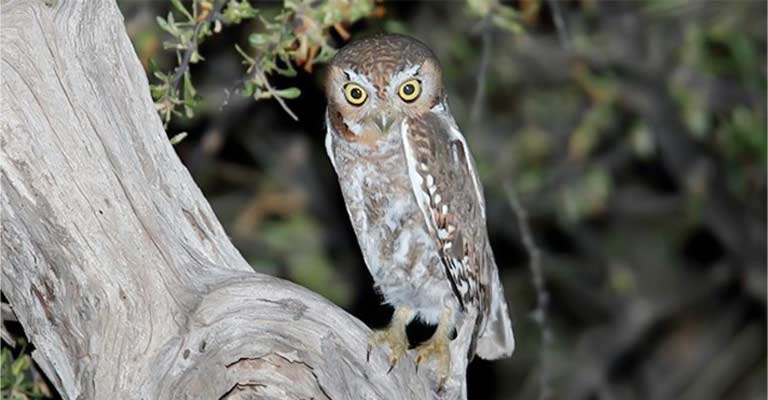
Identifying the Elf Owl also involves understanding its preferred habitat. This species is commonly found in desert and arid regions of the southwestern United States and Mexico.
Look for them in saguaro cacti, mesquite trees, and other suitable desert vegetation where they roost during the day.
Nocturnal Behavior
Being primarily nocturnal, the Elf Owl is most active during the night, utilizing its excellent low-light vision to hunt for insects.
Observing its nocturnal behavior, such as hunting in flight and perching on exposed branches during the dark hours, can aid in identification.
Dietary Preferences
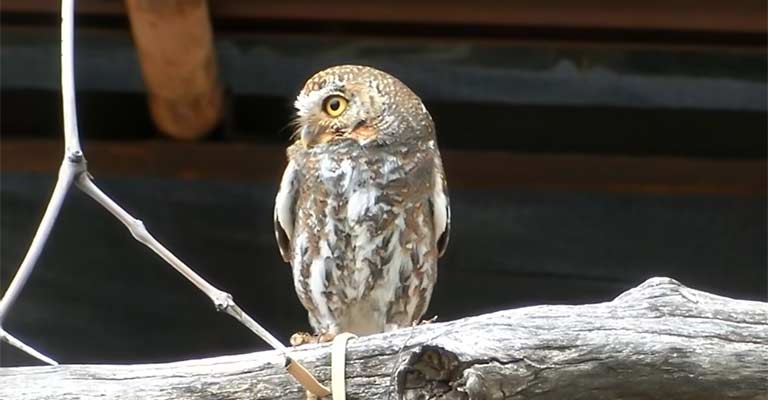
Understanding the Elf Owl’s diet is another key aspect of identification. These owls primarily feed on insects, including moths, beetles, and other small invertebrates.
The bird’s foraging behavior, characterized by rapid and agile flight while hunting for prey, is indicative of its dietary preferences.
Migration Patterns
Elf Owls are generally non-migratory but may exhibit some seasonal movements in search of food.
Understanding their migration patterns, if any, can be valuable for identification. Birders should pay attention to local and regional factors influencing the owl’s movement.
Identifying the Elf Owl involves a combination of visual and auditory cues, as well as an understanding of its habitat, behavior, and characteristics.
These petite birds, with their unique features and adaptations, add a touch of enchantment to the avian world and provide a rewarding experience for birdwatchers seeking to spot these elusive nocturnal creatures in their natural habitats.
Taxonomy of Elf Owl
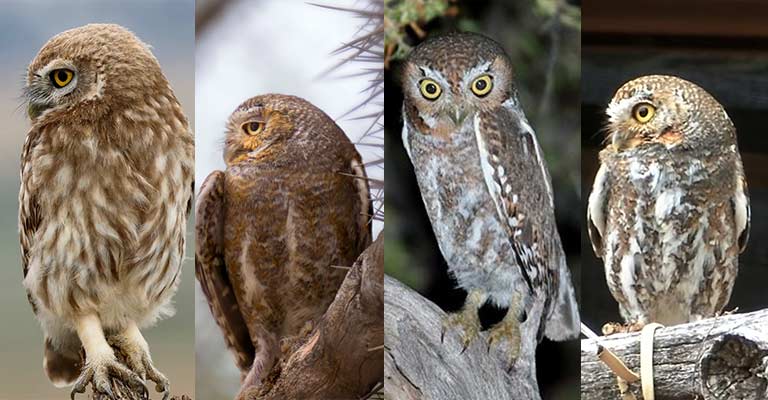
Here’s a table summarizing the taxonomy details of the Elf Owl:
| Taxonomic Rank | Classification |
| Domain | Eukaryota |
| Kingdom | Animalia |
| Phylum | Chordata |
| Class | Aves |
| Order | Strigiformes |
| Family | Strigidae |
| Genus | Micrathene |
| Species | M. whitneyi |
The Elf Owl (Micrathene whitneyi) is a fascinating species with distinct subspecies, each contributing to the rich tapestry of biodiversity in their respective regions.
Here’s a brief exploration of the four recognized subspecies:
- M. w. whitneyi (Cooper, JG, 1861): This subspecies inhabits the southwest USA and northwest Mexico. From the arid landscapes of Arizona to the northern reaches of Mexico, M. w. whitneyi showcases adaptability to diverse environments, embodying the spirit of the Elf Owl in its miniature yet resilient form.
- M. w. idonea (Ridgway, 1914): Found in the region spanning from south Texas in the USA to central Mexico, M. w. idonea highlights the species’ presence in a variety of habitats. Its distribution contributes to the overall ecological balance, showcasing the adaptability of the Elf Owl to both temperate and subtropical climates.
- M. w. sanfordi (Ridgway, 1914): Inhabiting the southern region of Baja California in Mexico, M. w. sanfordi reflects the species’ range extending into the Baja California Peninsula. This subspecies navigates the challenges posed by the arid landscapes of this unique region.
- M. w. graysoni Ridgway, 1886 (extinct): Tragically, M. w. graysoni was native to Socorro Island, off the west coast of Mexico, but is now extinct. This serves as a poignant reminder of the importance of conservation efforts to protect the remaining Elf Owl populations and their habitats.
Understanding these subspecies enhances our appreciation for the Elf Owl’s adaptability and the intricate ecological roles they play in their respective ecosystems.
It also underscores the urgency of conservation measures to safeguard their continued existence.
Elf Owl Life History
The Elf Owl (Micrathene whitneyi), with its diminutive size and captivating presence, possesses a fascinating life history that unfolds in the arid landscapes of North America.
This smallest owl species navigates a unique journey, from its choice of food to its nesting habits and the challenges it faces in the realm of conservation.
Exploring the life history of the Elf Owl reveals a story of resilience and adaptation in the face of diverse ecological challenges.
Food
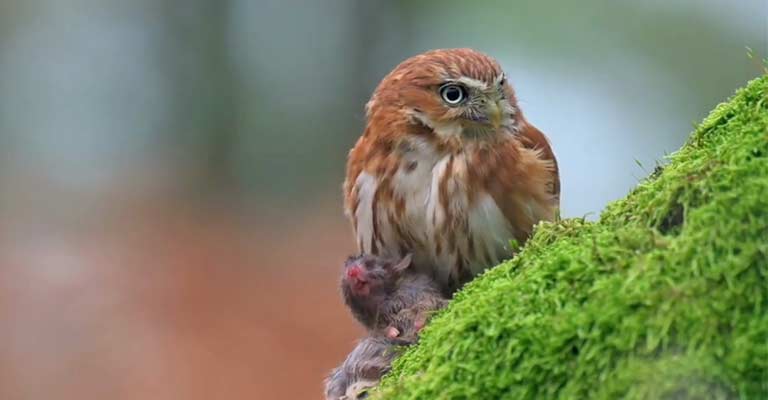
Elf Owls are primarily insectivores, relying on a diet that consists predominantly of insects such as moths, beetles, and other small invertebrates.
Their nocturnal hunting style involves agile flight and precise targeting of prey, aided by keen eyesight and exceptional hearing.
This dietary preference positions them as vital contributors to controlling insect populations in their habitats, showcasing their ecological significance.
Habitat
The Elf Owl is intricately tied to arid and desert environments, favoring regions with saguaro cacti, mesquite trees, and other vegetation typical of southwestern North America and parts of Mexico.
These birds are well-adapted to the challenges posed by such habitats, relying on their small size for concealment and their agility for navigating the intricacies of desert ecosystems.
Range Map
The Elf Owl’s range spans from the southwestern United States, including Arizona and New Mexico, down through Mexico.
Detailed range maps highlight their distribution, emphasizing the need for conservation efforts across these regions to ensure the survival of this unique species.
Nesting
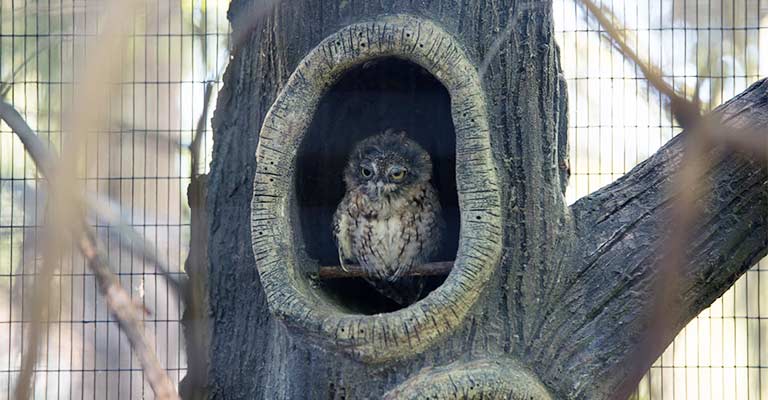
Elf Owls exhibit a remarkable approach to nesting. They often select natural cavities in saguaro cacti, trees, or abandoned woodpecker holes as their nesting sites.
The choice of these locations provides essential protection for their eggs and nestlings, allowing them to thrive in the harsh desert environment.
Breeding
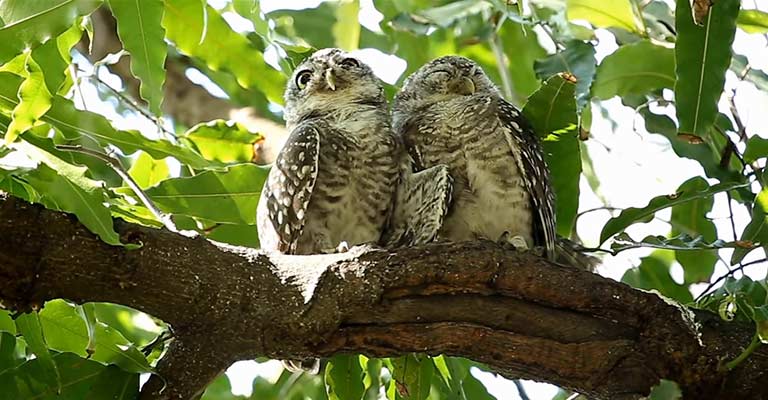
Breeding season for Elf Owls typically occurs in the spring, with pairs engaging in courtship rituals marked by vocalizations and displays.
The female usually lays a clutch of one to five eggs, and both parents contribute to incubation and caring for the nestlings. The young owls fledge after about a month, marking the beginning of their independent journeys.
Diseases
While Elf Owls may face threats from various diseases, specific ailments affecting this species are not extensively documented.
However, like many wild bird populations, they can be susceptible to factors such as habitat loss, climate change, and pesticide exposure, which can indirectly impact their health.
Treatment
Addressing diseases in Elf Owls involves comprehensive conservation measures aimed at preserving their habitats and mitigating human-induced threats.
Habitat restoration, sustainable land use practices, and minimizing pesticide use are crucial steps toward ensuring the well-being of Elf Owl populations.
In cases of direct injury or illness, rehabilitation efforts under the care of experienced wildlife rehabilitators become vital for individual birds.
Conservation
Conservation efforts for Elf Owls revolve around safeguarding their arid habitats and addressing the overarching threats posed by urbanization, habitat destruction, and climate change.
Collaborative initiatives between wildlife agencies, researchers, and local communities are instrumental in preserving the delicate balance necessary for the survival of this species.
Conservation strategies also involve raising awareness about the importance of protecting these charismatic birds and their unique ecosystems.
The life history of the Elf Owl is a testament to the intricate interplay between ecological adaptations, reproductive strategies, and the challenges faced in an ever-changing environment.
As stewards of these ecosystems, human efforts play a pivotal role in ensuring the continued existence of this enchanting and resilient owl species.
Nesting Details of Elf Owl
Here’s a table summarizing nesting details of the Elf Owl (Micrathene whitneyi):
| Nesting Details | Facts |
| Clutch Size | Typically 1 to 5 eggs |
| Number of Broods | Usually one brood per breeding season |
| Egg Length | Approximately 0.7 to 0.9 inches (1.8 to 2.3 cm) |
| Egg Width | Around 0.6 to 0.7 inches (1.5 to 1.8 cm) |
| Incubation Period | Approximately 21 to 24 days |
| Nestling Period | About 27 to 28 days |
| Egg Description | Small and white, slightly glossy, with no markings |
| Nesting Sites | Natural cavities in saguaro cacti, trees, or abandoned woodpecker holes |
| Nesting Habits | Both parents contribute to the incubation and care of nestlings |
| Courtship and Mating | Courtship involves vocalizations and displays; mating pairs stay monogamous during the breeding season |
Understanding these nesting details provides insights into the reproductive behavior and strategies employed by the Elf Owl, highlighting its adaptation to arid environments and the importance of specific nesting sites for the survival of their eggs and nestlings.
5 Fun Facts About Elf Owl
The Elf Owl (Micrathene whitneyi), despite its diminutive size, boasts a plethora of intriguing characteristics that captivate the imagination of bird enthusiasts.
Here are five fun facts that shed light on the remarkable nature of this small yet charismatic owl.
- Miniature Marvel: As the smallest owl in North America, the Elf Owl stands merely 5 to 6 inches tall, embodying a miniature marvel in the avian world.
- Nocturnal Maestro: Embracing the night, Elf Owls are nocturnal maestros, exhibiting agile flight and adept hunting skills under the cover of darkness, preying on insects with precision.
- Tree-Hollow Dwellers: Despite their size, Elf Owls are adept at finding snug homes. They often nest in natural tree hollows, saguaro cacti, or even abandoned woodpecker holes, showcasing their resourcefulness.
- Migratory Myth: Contrary to many owl species, Elf Owls are primarily non-migratory, choosing to reside year-round in their arid habitats, adding a layer of mystery to their lifestyle.
- Vocal Virtuosos: Elf Owls are known for their distinctive vocalizations, emitting a series of high-pitched whistles that echo through the night, creating a musical symphony in the deserts they call home.
Wrapping Up
The Elf Owl emerges as a captivating ambassador of the avian world, navigating the challenges of arid habitats with resilience.
From its miniature stature and nocturnal prowess to its unique nesting habits and melodious calls, the Elf Owl weaves a tale of adaptation and charm.
As stewards of our natural ecosystems, understanding and appreciating the intricacies of this smallest North American owl contribute not only to our knowledge of biodiversity but also to the imperative task of conservation.
Preserving their habitats becomes a shared responsibility, ensuring these delightful creatures continue to enchant the night skies and thrive in their unique desert dwellings. Thank you so much.